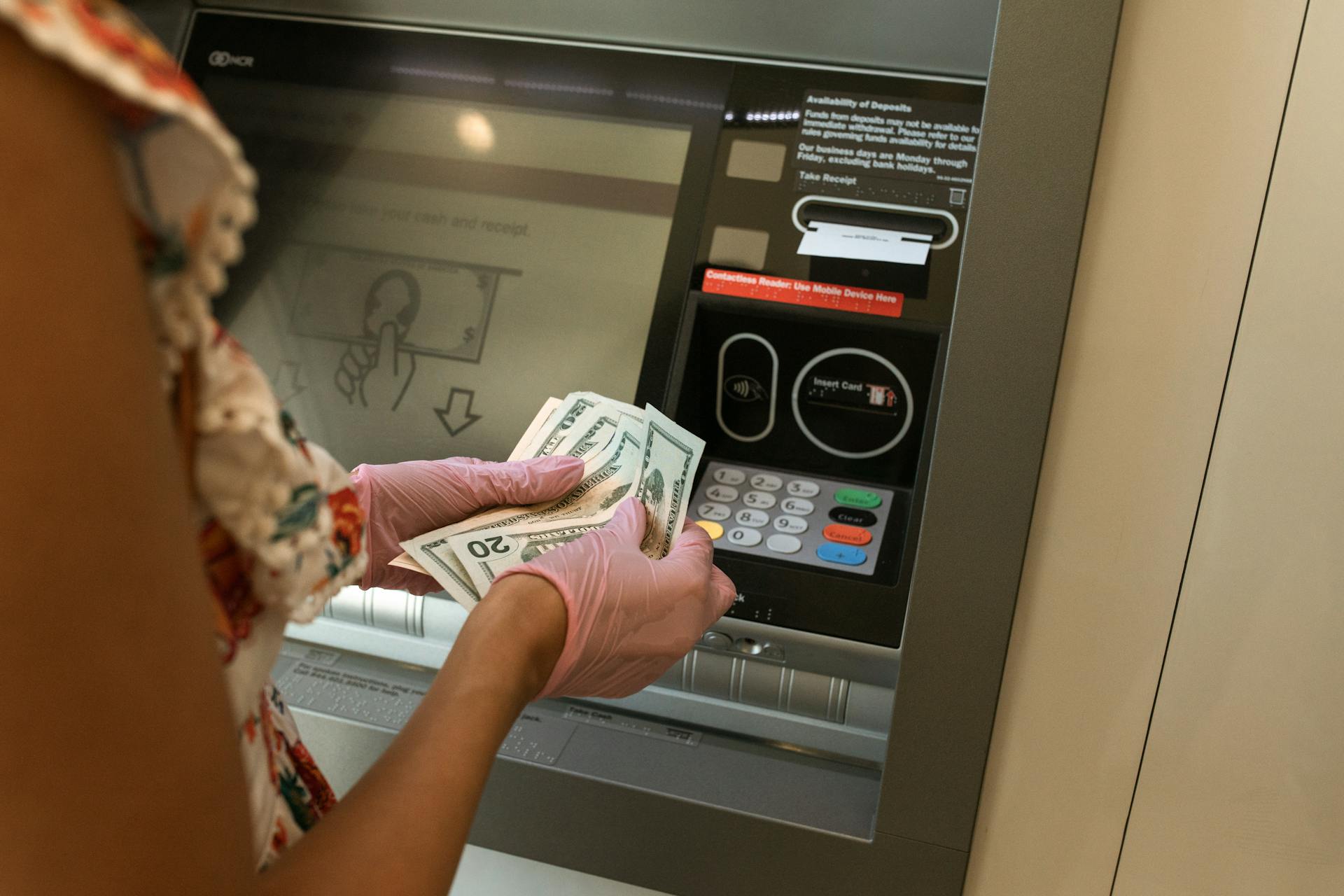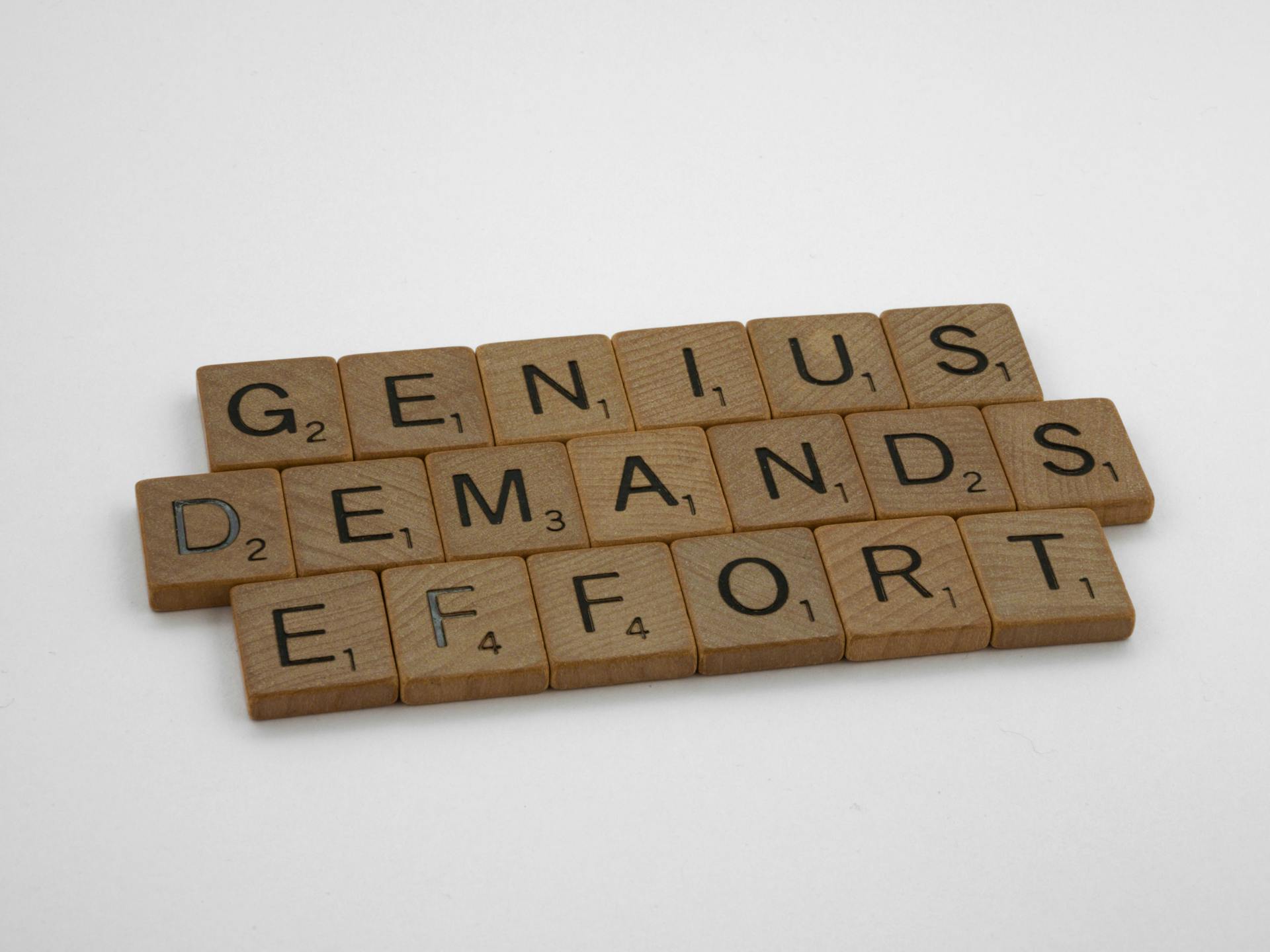
A deposit slip is a document used to record a deposit transaction, typically used when making a deposit at a bank.
It usually includes the depositor's name and account number, as well as the date and amount of the deposit.
The depositor's signature is also required to verify the transaction.
This helps ensure the accuracy and security of the deposit process.
For more insights, see: Bank Transfer Swift Code
What Is a Deposit Slip?
A deposit slip is a document that helps banks keep track of your deposits. It's usually a simple form with your name, address, date, and account number.
You'll need to fill out the slip with any missing information. This includes writing down the amount of cash you're depositing on the right side of the slip.
If you're depositing checks, you'll need to write the check numbers on the blank lines below "Cash" and put the check amounts in their respective boxes. This helps the bank match the checks with your account.
Curious to learn more? Check out: Do You Need a Deposit Slip to Deposit a Check
The total amount of your deposit should be written on the bottom line of the slip. This ensures that the bank knows exactly how much money you're adding to your account.
You'll then give the slip to your teller, who will use it to record your deposit manually. Some banks may require you to put your cash and checks in an envelope and hand it over to the teller.
Filling Out a Deposit Slip
Filling out a deposit slip can seem daunting, but it's actually quite straightforward. The first thing you need to do is enter the date on which the deposit is being made.
You'll also need to provide your personal information, including your name and account number. This is usually found on the deposit slip itself, but if you're using a blank slip, you'll need to fill it in.
The date is an important piece of information, as it helps the bank keep track of your transactions. You can usually find the date field at the top of the deposit slip.
For your interest: Do You Need a Deposit to Remortgage
To fill out the deposit slip, start by listing the cash amount of your deposit. This is the total amount of currency (paper bills and coins) that you've brought for depositing into your account. If you don't have any cash to deposit, leave this section blank.
You'll also need to list checks individually, including the check number and amount of each check. Each individual check gets its own line, and there's space for you to enter the check number next to the dollar amount of each check.
If you're depositing money but also want some of the cash back, list the amount of cashback you want to receive in the Less Cash Received section.
Here are the steps to fill out a deposit slip:
- Enter the date
- Provide personal information (name and account number)
- List cash amount of deposit
- List checks individually
- List cashback amount (if applicable)
- Add up deposits for a subtotal
If you need more room, you can use the back of the deposit slip or ask a bank employee for guidance. Most deposit slips have an extra set of boxes printed on the back so that you don't have to fill in your personal information multiple times and deal with multiple subtotals.
A different take: Misc. Debit Back to My Own Account Meaning
Understanding Deposit Slip Details
To fill out a deposit slip, you'll need to provide your personal information, including your name and account number. This information is usually found on the left side of the slip.
You'll also need to fill in the date of the deposit, which is an important detail that helps the bank keep track of transactions. The date is typically found in a space provided next to the word "Date".
If you're depositing cash, you'll need to list the amount in the box next to the word "Cash". This includes both the dollar amount and the cents portion, which is usually entered in a separate box to the right of the dollar amount.
Depositing checks requires a bit more detail, as you'll need to list each check individually on its own line. This includes the check number and the amount of each check, which helps the bank keep track of each item.
Take a look at this: How to Write a Withdrawal Slip
To calculate the subtotal, you'll need to add up the cash and check deposits. This is usually found at the bottom of the slip and helps the bank verify the total amount being deposited.
If you want to receive cash back from your deposit, you'll need to indicate the amount in the "Less Cash Received" section. This is usually found on the same line as the subtotal.
Here's a breakdown of the deposit slip sections:
Remember to sign the slip and include any additional details required by your bank. By following these steps, you'll be able to fill out a deposit slip accurately and efficiently.
Frequently Asked Questions
Do deposit slips still exist?
Yes, deposit slips still exist and are used by banks to record transactions, although their design may vary between institutions. You can obtain a deposit slip duplicate or a receipt when making a deposit at a bank.
Sources
Featured Images: pexels.com

